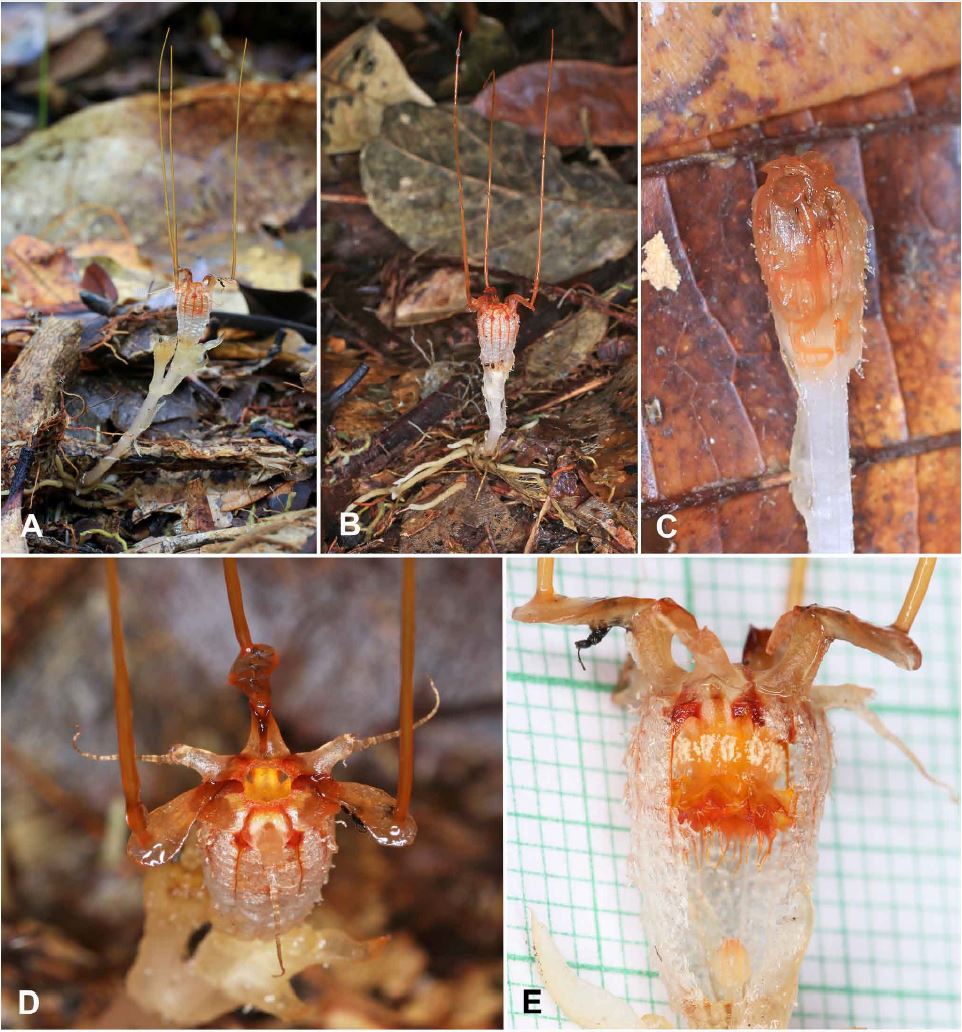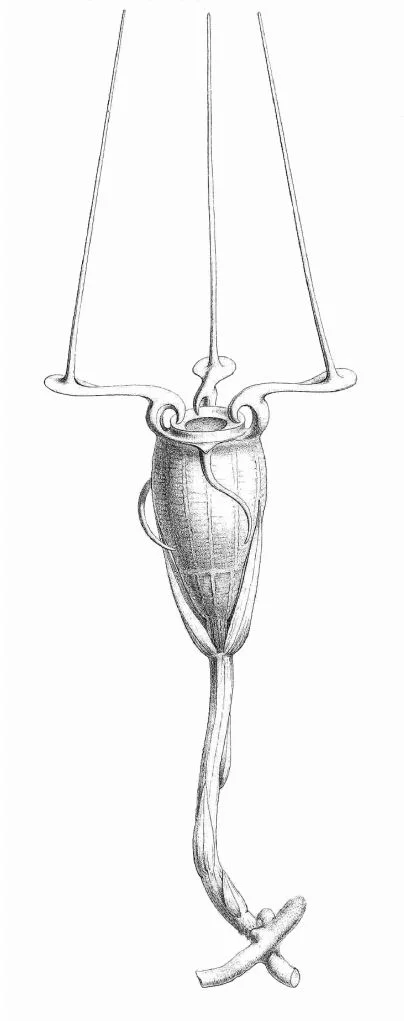Extinction is a hard status to confirm for many types organisms. Whereas discovering a new species requires finding only a single individual, declaring one extinct requires knowing that there are no individuals left at all. This is especially true when organisms live cryptic lifestyles, a point recently made quite apparent by the rediscovery of a small parasitic plant known scientifically ask Thismia neptunis.
Thismia neptunis is a type of parasite called a mycoheterotroph, which means it makes its living by parasitizing mycorrhizal fungi in the soil. It obtains all of its needs in this way. As such, it produces no leaves, no chlorophyll, and really nothing that would readily identify it outright as a plant. All one would ever see of this species are its bizarre flowers that look more like a sea anemone than anything botanical. Like most mycoheterotrophs, when not in flower it lives a subterranean lifestyle.
The original drawing of Thismia neptunis (from Beccari 1878).
This is why finding them can be so difficult. Even when you know where they are supposed to grow, infrequent flowering events can make assessing population numbers extremely difficult. Add to this the fact that Thismia neptunis is only known from a small region of Borneo near Sarawak where it grows in the dense understory of hyperdiverse Dipterocarp forests. It was first found and described back in 1866 but was not seen again for 151 years. To be honest, it is hard to say whether or not most folks were actively searching.
Regardless, after a 151 year absence, a team of botanists recently rediscovered this wonderful little parasite flowering not too far from where it was originally described. Though more study will be needed to flesh out the ecology of this tiny parasitic plant, the team was fortunate enough to witness a few tiny flies flitting around within the flower tube. It could very well be that these odd flowers are pollinated by tiny flies that frequent these shaded forest understories.
As exciting as this rediscovery is, it nonetheless underscores the importance of forest conservation. The fact that no one had seen this plant in over a century speaks volumes about how little we understand the diversity of such biodiverse regions. The rate at which such forests are being cleared means that we are undoubtedly losing countless species that we don't even know exist. Forest conservation is a must.
Click here to support forest conservation efforts in Borneo.
Photo Credit and Further Reading: [1]

